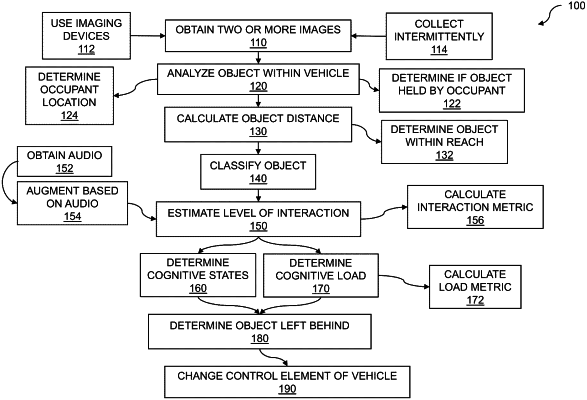| CPC G06V 20/59 (2022.01) | 29 Claims |

|
1. A computer-implemented method for vehicle management comprising:
collecting two or more images of a vehicle interior using one or more imaging devices within the vehicle;
determining a human perception metric based on the two or more images, wherein the human perception metric includes a cognitive load for an occupant of the vehicle;
analyzing the two or more images to detect an object within the vehicle;
classifying the object within the vehicle;
collecting audio information from within the vehicle;
matching a portion of the audio information to at least one of the two or more images;
estimating a level of interaction between the object and the occupant of the vehicle, wherein the estimating the level of interaction includes calculating an interaction metric and wherein the estimating is also based on the matched portion of the audio information; and
changing a control element of the vehicle based on the classifying and the level of interaction.
|